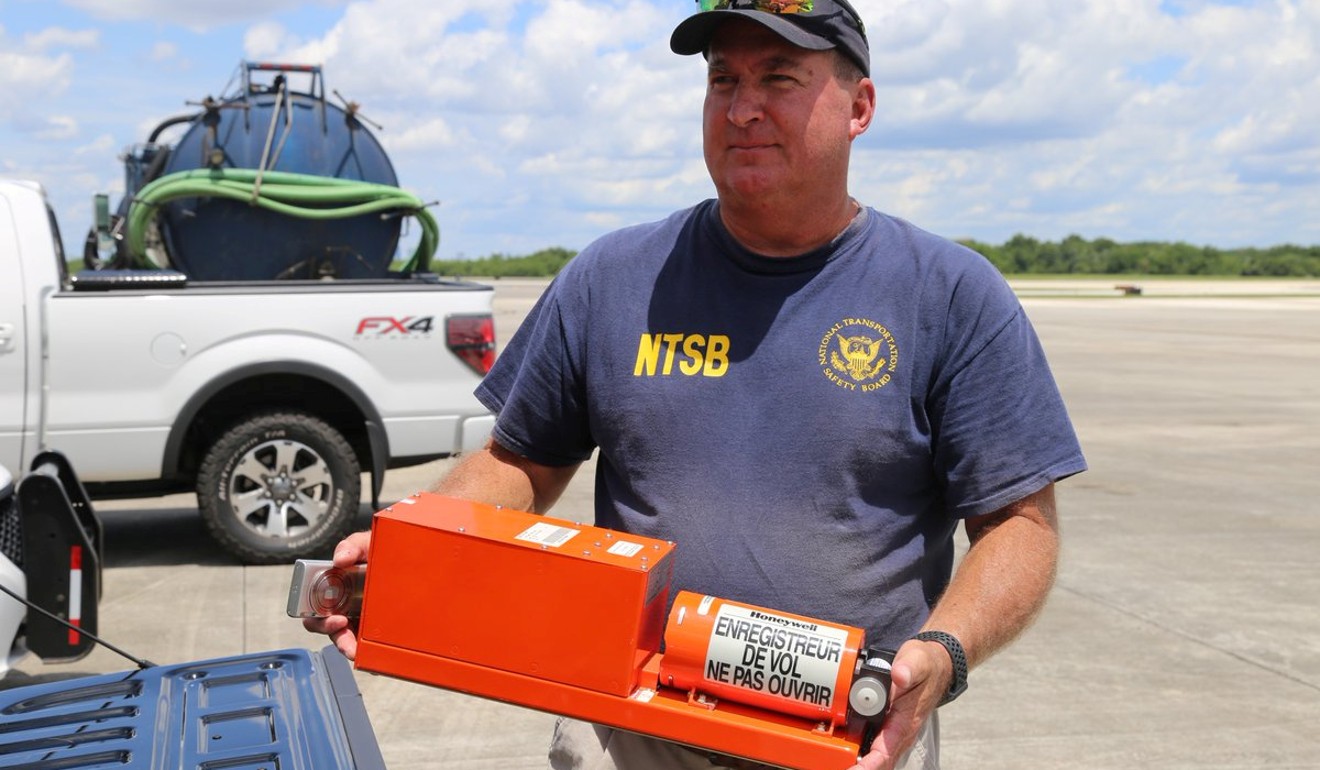
Pets still ‘missing’ after military flight from Cuba crashes into river in Florida
- Authorities have found the flight data recorder and are trying to piece together what happened

Federal investigators on Saturday began piecing together what caused a military aircraft carrying 143 people and at least four pets to slide off a US Navy runway in Jacksonville, in the US state of Florida, and crash into a river on Friday night.
Miami Air International Flight 293 departed from Guantanamo Bay in Cuba and experienced a rough landing at Naval Air Station at about 9:50pm.

Everyone on board escaped with minor injuries at worst, but pets the Boeing 737 was also carrying were probably killed.
“Many people are asking about the pets aboard the aircraft. … Unfortunately, they have not been retrieved yet due to safety issues with the aircraft,” the US Navy said on Facebook. “Our hearts and prayers go out to those pet owners during this terrible incident.”
USA Today reported that there were four pets listed on the flight’s manifest and they are presumed dead, as the cargo hold filled with water during the landing.
At a news conference to announce updates to the investigation into the crash, including the safe recovery of the aircraft’s flight data recorder, Captain Michael Conner of NAS Jacksonville said first responders tried to locate the animals but could not see any above the water line and left the area in fear for their own safety.
“We asked them to specifically look for pet carriers, and they could not see any … above the water line,” he said. “So we obviously do not have confirmation but we are continuing to do what we can to positively determine the status of the pets.”
Conner, who said he is a pet owner, said his “heart sunk” when he learned animals were on the plane.
“I spoke with some of the pet owners last night – it was very obviously a rough situation. Our sympathies and my heart goes out to those families.”
National Transportation Safety Board Vice Chairman Bruce Landsberg said the aircraft’s flight data recorder, which did not sustain any damage, was on its way to the NTSB laboratory in Washington and authorities were preparing to remove the plane from the river to retrieve the cockpit voice recorder.
“We cannot get to it until the aircraft is moved,” he said.

Federal investigators arrived at the scene on Saturday but have not to say what caused the crash. Among the factors being investigated are the status of the runway, weather at the time of the landing and possible human error, Landsberg said.
The flight data recorder will give investigators raw data on air speed, altitude, point of touchdown and other details.
“We expect to get a very full report on that shortly,” he said.
Landsberg said Miami Air International, which operates charter flights from Guantanamo to navy air stations in Jacksonville and Virginia, had been involved in one accident before – a hard landing in Pennsylvania in 2015.

The charter company operates five Boeing aircraft. The plane involved in Friday’s crash, a Boeing 737-800, was built in 2001 and has no prior incidents, Landsberg said. There are more than 900 Boeing 737-800 planes in use in the US and scores more internationally, he said.
Landsberg said the pavement of the runway, which is about 2,700 metres (9,000 feet) long and 60 metres (200 feet) wide, is not marked by grooves, which are designed to divert water quickly off the runway during heavy rain. It is unclear whether that was a factor on Friday, he said.
There were reports of heavy rain during the incident, but investigators have not determined what the weather was like at the time of the crash.
“The aircraft departed the right side of the runway at the far end and impacted a low sea wall which was made of loose stones and rocks and stopped in the shallow rivers of the St Johns River,” he said.